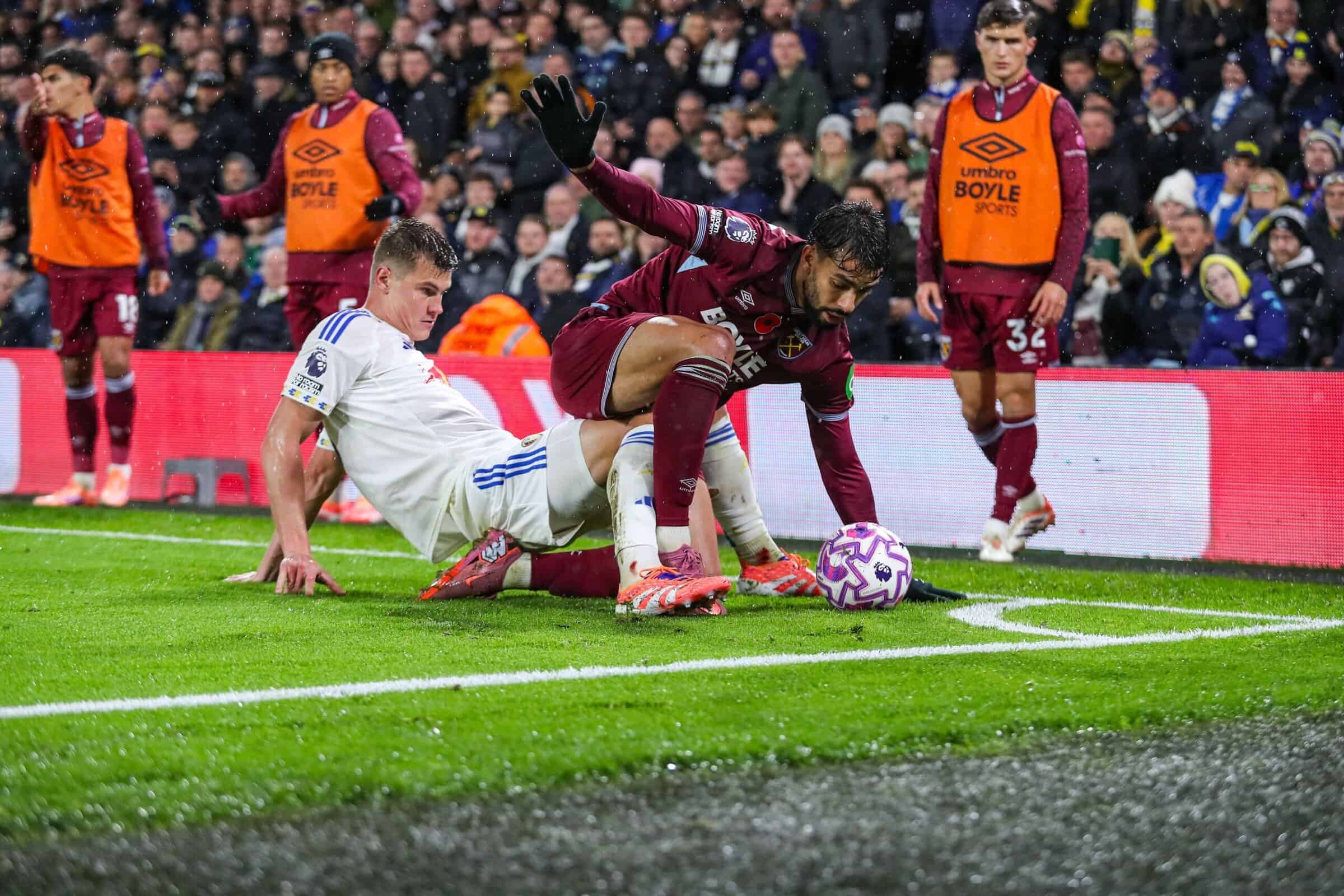Limited Time Discount! Shop NOW!

Marvin Gaye was right. Well, Tony Soprano. Believe none of what you hear, and half of what you see. We live in an era where being emphatic is more important than being correct and it’s increasingly permeating football discourse, and Leeds’ 2-0 defeat at Turf Moor is a perfect example. Pascal Struijk misplaced a pass well inside the Burnley half in the 67th minute, which allowed Kyle Walker to run almost the length of the pitch before turning back to pass the ball to a teammate. Burnley played four passes without being closed down, including one to Loum Tchaouna standing in yards of space outside the Leeds penalty area, who turned and, still untouched, lashed a shot past Karl Darlow.
Much of the online discourse between fans and even in the media after the match talked about a Struijk mistake leading to the goal, so when Jaka Bijol stepped into the team for Friday night’s big game against West Ham, one which Leeds won, there was a sense of vindication in the criticism of Struijk.
I’m Bijol’s biggest fan this side of Lake Bled and I think it’s fair to say he had a decent debut while showing the signs of rust from having played zero Premier League minutes prior to last Friday night. But I’m still a big fan of Struijk who, to some, is getting a hard time for mistakes that aren’t particularly attributable to him. He’s also a known quantity in the Premier League to Leeds fans, or so we think. But I’m sticking my head above the social media parapet and saying he deserves more credit than he gets, while also believing that he can look a little slow — especially alongside Joe ‘Wheels’ Rodon — and at times lacks the decisiveness of Bijol, taking opponents out, legally or otherwise.
When Struijk made his Premier League debut at Anfield for Leeds five years ago, he was a 21-year-old with five matches of senior football under his belt. He didn’t have the benefit of any real Championship experience in which to find his feet, unless you include two starts in the dead rubbers after promotion was secured in July 2020. He was thrown in at the deep end in a Premier League team that, across three seasons, conceded more goals than most and played mostly high-risk football. It was a baptism of fire.
Two years in the Championship in his mid-twenties gave him the chance to thrive in a calmer environment, away from the hyper-analysis and absolutism players suffer in the Premier League. His centre-back partner Joe Rodon had a similar trajectory, catapulted into the upper echelons of the Premier League when Tottenham signed him only fifty games into his senior career at Swansea in the second tier. He stagnated across two seasons in London, before a so-so year at Rennes saw him join Leeds in the summer of 2023. Two years later, Rodon is the manifestation of the Leeds fanbase on the pitch, wearing his heart and, sometimes, blood on his sleeve as he clatters into opponents, starts Leeds attacks and manages to get himself pictured screaming like a crazed warrior each week without fail.
Rodon’s blood and thunder approach will always benefit him in the debate about Leeds’ best defence, as does the fact that Leeds had excellent runs in both of the last two seasons when Struijk was injured and manager Daniel Farke was forced into picking both Rodon and compatriot Ethan Ampadu in defence. No matter how well Leeds played in those games, it’s hard not to argue that Ampadu isn’t a centre-back and that Struijk isn’t the better defender, which was best evidenced in the 2-1 win against Sunderland when Ampadu got turned by Wilson Isidor for Sunderland’s goal, while Struijk came off the bench and scored both of Leeds’ goals, including a 95th-minute winner.
As much as I love Joe Rodon, he also came into this season with as much to prove in the top flight as Struijk. For the most part, both have done a pretty good job across the first nine matches and, at times, have probably exceeded expectations given the vast majority of ‘pundits’ predicted Leeds to go down with a whimper like the promoted clubs have done for two years now. However, you only have to look at Burnley’s first goal at Turf Moor and West Ham’s goal on Friday evening to see the areas for improvement in Leeds’ defence, including Rodon’s organisation and marking.
The reality for Leeds United’s three main centre-backs is that they’re all quite likely a similar standard of player with differing strengths and weaknesses that, when paired together on a weekend, complement the other’s own attributes. Struijk’s ball progression and aerial prowess works well with Rodon’s recovery speed and all-round defending. Bijol’s ability to defend the penalty area, especially in the air, and his ability to use physicality to douse fires should combine well with Rodon and/or Struijk, when required.
Struijk’s illness provided Bijol with the opportunity he had patiently waited for since arriving at Leeds. Struijk has likely played more than he expected to when Leeds dropped the guts of £17m on a player in his position and it’s more than likely that Bijol’s one-match suspension carried over from a red card at Udinese provided his teammate with the opportunity to nail a place in the team.
All three centre-backs will prove useful throughout a long Premier League season, even if Farke seems averse to unforced squad rotation.
Simply because Leeds won a match without Struijk in the side, against a different opponent, does not make the case for dropping him entirely. Farke likely knows as much and has a tough decision coming up when selecting the team to face Brighton. Football is a simple game by nature, but that doesn’t mean it’s always straightforward.
(Photograph by Every Second Media, via Alamy)
£10.00
£35.00
£9.00
£45.00
£3.00
£3.00